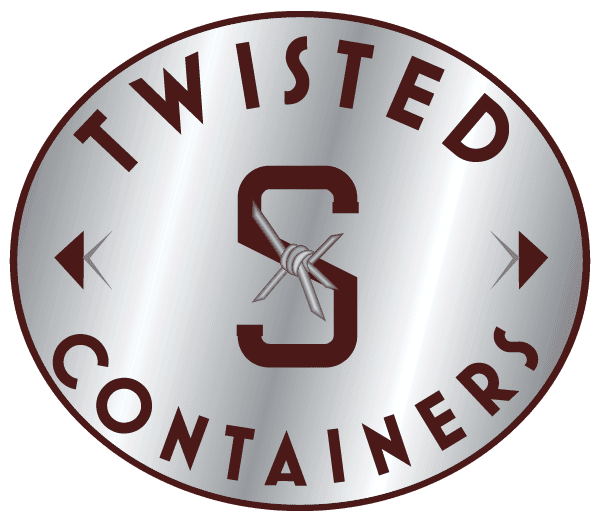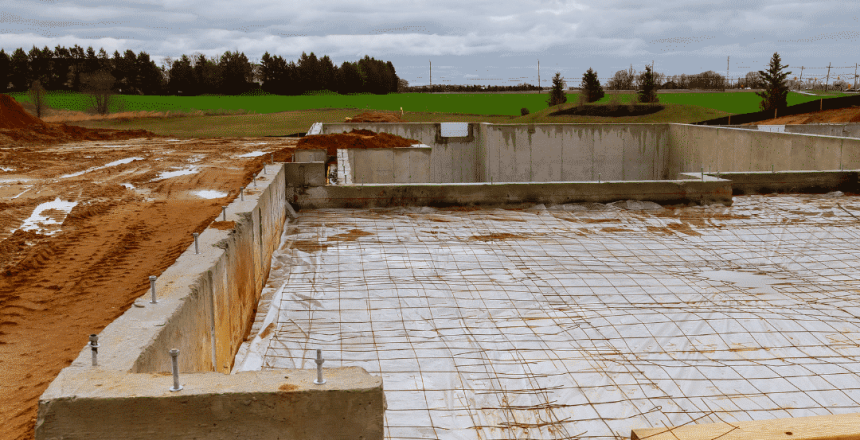Shipping containers are a wonderful way to maximize efficiency on how you use space. They can be of use for just about anything, from a shipping container home to a retail storefront. The problem is that prep work is necessary before it is ready for use. It’s important to know how to do this so you don’t create costly problems down the line! In this blog post, we’ll talk about how to prep ground for shipping container placement, as well as how to build a foundation if you don’t have one already.
Choose a Site with Enough Space for Delivery
Preparing your site for delivery of your shipping container ensures that you can easily open your storage containers for unloading. The site should be level, have ample space around it. This is to accommodate the truck and trailer that will deliver your container. Additionally, ensure there is a path from the road to the storage container delivery spot that is clear of debris and obstacles.
Overhead clearance is also important to consider. Make sure there is enough height for the truck and trailer to pass through, as well as for the storage container itself. If you are placing your shipping container in an area with low clearance (like a basement), you will need to take this into account when choosing your delivery spot.
Additionally, tree branches, gates, and other items that are low-hanging need removal before delivery to prevent damage.
Furthermore, when you are selecting a delivery site, it is important to be aware of the clearance requirements for the truck and trailer. There are three key clearance measures to consider:
- Side-to-side clearance – this is how much space is necessary on either side of the truck and trailer for them to pass through. This measurement should be taken from the widest point on the truck and trailer.
- Pull-away forward clearance – is how much space is necessary in front of the truck for it to back up to the delivery spot. The required distance will vary depending on how long the truck is, but it should be at least 15 feet.
- Overhead clearance – how much space is necessary above the truck and trailer for them to deliver a container. The required distance will vary depending on how tall your ceiling is, but it should be at least 13 feet.
Once you have a spot with enough space around it, next comes prepping the ground itself. This is so that when they start digging for whatever foundation work is necessary, they’re not hitting rocks and roots.
What Makes a Good Site for a Shipping Container?
There are a few things to look for when choosing a spot to place your shipping container. Ideally, you want:
- Level ground – this will make it easier to get the container in place and avoid any unwanted tilting or sinking.
- Firm ground – if the ground is too soft, it can cause the container to sink over time, as well as create problems during delivery.
- Free of pooling water – if there is standing water near your shipping container site, it can damage the container and its contents over time.
- Minimal tree roots – tree roots can cause structural damage to a shipping container and make it difficult to level the container properly.
If your site doesn’t meet all these requirements, don’t worry – there are ways to work around them. For example, if the ground is not level, you can put down a leveling pad or use blocks to raise the container off the ground. If there are too many tree roots, you can remove them or build a foundation around them.
Temporary and Permanent Foundation/Prep Options
Once you have chosen your site, the next step is to decide on how you want to prepare the ground. There are a few different foundation and prepping options to choose from:
Gravel Bed Foundation
One of the easiest ways to prepare a spot for your shipping container is by creating a gravel bed. This type of foundation bed provides a stable surface for the container to sit on, as well as easy drainage. However, if your site has a slope or not level, it may be difficult for you to create one that will support your shipping container properly.
Concrete Slab Foundation
If you’re placing the shipping container indoors (like in an existing basement), then building a slab foundation is a good option. It will provide a level surface for the container to sit on and is easy to build if you have access to concrete and tools.
Footings Foundation
If you’re placing the shipping container outdoors, footings are a good way to create a stable foundation. These involve digging holes in the ground and pouring concrete into them, which creates a stable surface for the shipping container to sit on. These are also a good option if you have rocky soil, as they will hold your shipping container in place and prevent it from sinking or tilting over time.
Corner Support Foundation
This is how most storage facilities build their foundations – they simply set up support beams around the perimeter of the container and use those to hold it in place. This works well if you’re placing your shipping container indoors or on level ground but can present a challenge for outdoor placement.
Pier Foundation
Piers are a popular method for many individuals to level the ground, especially if it is sloping. Piers simply elevate or lower the shipping container until it is level. This is a good option if your site has too many rocks or roots to build footings, as well as for indoor placement.
Pile Foundation
Like piers, a pile foundation elevates the shipping container from the ground. Pile foundations use long wood or metal beams and concrete plates that are driven into the ground (usually with a hammer drill) and then covered in gravel for drainage.
Railroad Ties Foundation
If you have a lot of tree roots near your shipping container site, using railroad ties can be an effective way to create a foundation for your container while avoiding damage to the roots. Railroad ties also can provide a surface for you to build up and level your shipping container, so it sits at the right height.
One thing to note is that some people use more than one foundation option when prepping their site for their new shipping container. For example, they might put down gravel as an initial base, then add concrete footing if it’s a sloped or bumpy site.
Read more: Choosing a Shipping Container Foundation: Things to Consider
Steps for How to Prep Ground for Shipping Container Placement
If you are placing your shipping container on a solid surface like concrete or asphalt, then this step is unnecessary. However, if you are placing your shipping container on gravel or dirt, there is some necessary ground preparation.
Here are a few tips for prepping your shipping container foundation:
- Choose the right location. Before you do anything, take some time to choose the right spot for your shipping container. The site should be level and have good drainage.
- Clear the area of debris. Once you have chosen the spot, clear it of any debris like rocks, sticks, or roots.
- Remove tree stumps. If there are any tree stumps near your shipping container site, remove them before placing the container. They will interfere with the stability of the container and can damage the surrounding trees.
- Level the ground. If there is uneven ground, another option is to create a gravel bed or footing that supports the container.
Once the ground site preparation is ready and has solid structural integrity, it’s time to place your shipping container.
Looking for shipping container delivery in Oklahoma?
We hope this guide on how to prep ground for shipping container placement has been helpful!
If you’re looking for reliable, affordable shipping containers in Oklahoma, call Twisted S Containers today. We can provide you with quality shipping containers for any project. We also offer delivery and setup services, so you can have your new shipping container ready to use in no time. Contact us today!
Check out our other blog posts:


